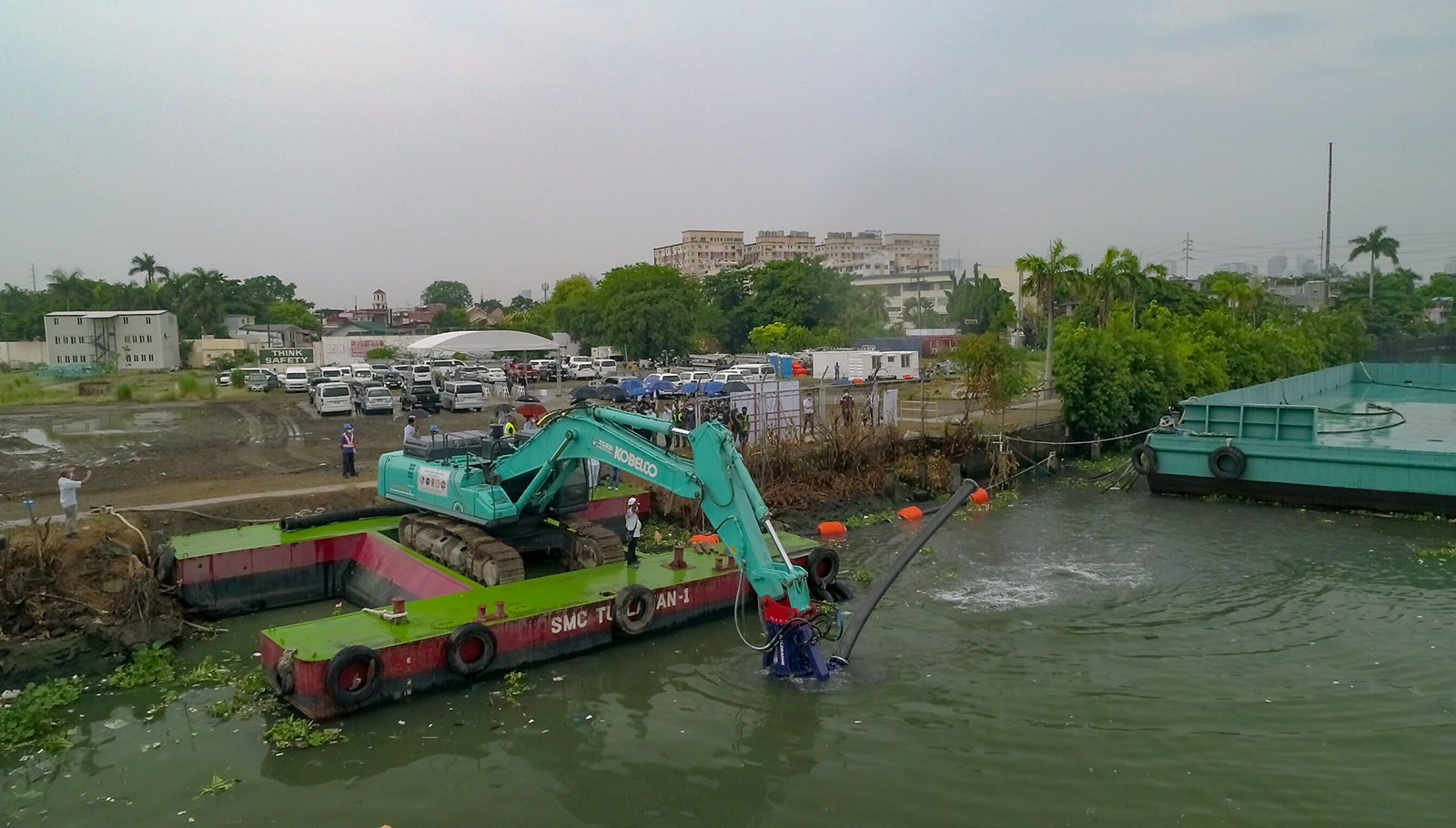San Miguel Corporation (SMC) and the Department of Environment and Natural Resources (DENR) will commence the cleanup of the Pasig River before the end of May as the company commits to spend P1 billion for the initiative — the boldest and most recent attempt at reviving the biologically inactive river.
The cleanup, which is shaping up to be the largest joint government and private sector effort to clean up the heavily polluted and silted Pasig River, is the second such initiative of SMC. Last year, the company began a similarly ambitious P1 billion effort to clean up the 27-kilometer Tullahan-Tinajeros River system, running from La Mesa Dam through Quezon City, Malabon, and Navotas — cities known for flooding during the rainy season.

SMC, Ang led company is committed to rid the major river systems of silt and solid waste and return them to their ideal depths, so they can more effectively channel flood waters out to the Manila Bay. More importantly, the rehab program will help significantly to reduce plastic waste pollution in seas and oceans–which endanger our marine resources, and threaten fishing grounds.
In a report released by scientific online publication “Our World in Data” last May 1, the Tullahan River is listed as one of seven Philippine rivers in Asia that contribute the most plastic waste to the oceans. Other Philippine rivers in the list are the Pasig River, Meycauayan River in Bulacan, Pampanga River, Libmanan River in Camarines Sur, Rio Grande de Mindanao River, and the Agno River in Pangasinan.
“Like traffic, congestion, and smog, pollution of our bodies of water is one of the many issues that have made life difficult and less than ideal for all of us these past couple of decades. While many of us may not immediately notice it, we are paying a big price for these compounding problems. Our advocacy is to take action and undo some of the damage and rescue and rehabilitate our rivers,” Ang added.
Apart from the Tullahan and Pasig Rivers, SMC has earlier announced its plans to dredge the Meycauayan Rivers as part of its environment and flood mitigation program for Bulacan province.

For the Pasig River rehabilitation project, SMC is looking to extract some 50,000 metric tons of silt and waste every month, or a total of 600,000 metric tons per year from the river.
To ensure sustainability, SMC integrated the river’s rehabilitation into plans for the Pasig River Expressway, to be built on the banks or sides of the river, and seen to further decongest traffic and improve accessibility within Metro Manila.
Meanwhile, since starting its Tullahan river cleanup in June last year, SMC has reported removing over 219,000 metric tons of silt and waste from the river. The river cleanup is one of the main reasons why Malabon and Navotas reported no major flooding during the typhoons that hit Luzon late last year.
Earlier, SMC announced the procurement of new dredging equipment that will help expedite dredging activities to cover more areas before the rainy season sets in.
SMC is also eyeing to clean and widen the tributaries belonging to the Marilao-Meycauayan-Obando River System (MMORS) in Bulacan. Also planned are river channel improvements for the Alipit or Taliptip River; Sta. Maria River, and the Meycauayan River of the MMORS.
Image Sources: sanmiguel.com.ph, PRRC, autocar.com.ph






